Interfaces of the future, and how to hack around with them now
On 31st July I gave the following talk at Front End London. The slides are here.
I’d like to talk today about some of the new kinds of interfaces that are on the horizon and may be taking off in the next few years. And for a couple of the devices that I’m finding most exciting at the moment, I’ll introduce you to hacking around with them right now, using Web technologies.
Luckily I get to explore this kind of stuff in my day job, as a Developer in the Future Technologies team in Pearson, the world’s leading learning company. (Some of you here may know it as the parent company of the Financial Times).
First, let’s think about where we are now, in the world of the Web.

Credit: Jeremy Keith
We’ve moved on from the Desktop Era, and having travelled through the Age of Mobile, we’re now in the Multi-Device Era, where we no longer have neat categories of devices (“smartphone”, “tablet”, “desktop”), but a continuum of different screen sizes and an assortment of touch-screens and non-touch screens.
But in a way, all these devices are still kind of the same. They’re all flat, 2D screens that we have in our hands, or just in front of us. As Bret Victor memorably said, it’s all just Pictures Under Glass.

Credit: PlaceIt
That surely can’t be it… So what’s next?
Well I’m sure we’ve all been hearing a lot of hype about wearables recently. Interest in smartwatches has surged since 2012 when Pebble (on the left here) became the first $10m Kickstarter campaign.

Credit: Kārlis Dambrāns
Now Google, Samsung, LG, Motorola and many others are getting in on the act, and of course we’re all waiting to see what Apple may or may not reveal later this year.
And who could forget the poster child of geeky new tech, Google Glass?
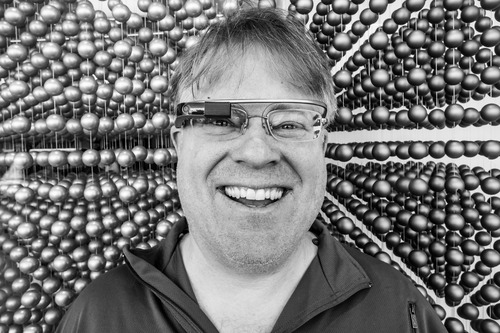
Credit: Thomas Hawk
If you haven’t already tried it out, I’m sure you’ve all heard lots of opinions about it already.
You might be, quite rightly, feeling a bit skeptical about these wearable devices taking off. Are people really going to want to use them? Are they actually useful? How many people would actually be happy to wear things like this out in public? And you might be thinking that they aren’t really that different to what we have now. Even if they do become popular, aren’t they merely additions to the Multi-device Era we’re already in?
I think those are all very reasonable thoughts, when looking at the wearables space right now.
But I’d like to offer up a couple of reasons why I think that certain kinds of wearable devices could become a very big deal in the near-future…
Different devices, different experiences
The first thing I’d like to say is that, as with smartphones and tablets, the differences in these devices aren’t merely in the sizes of the screens. It’s in how we use them and the different kinds of experiences that they lend themselves to. For example, when the iPad was announced, a lot of people dismissed it as just being a “big phone”. Too big to take out with us all the time, and why would we need them at home because we already have our laptop there? But it turned out that they can make for a great “lean back” device, something that we’re more comfortable using on the sofa.

Credit: plantronicsgermany
So I think we should think carefully about the kinds of experiences that new devices might lend themselves to as well.
Especially because some of the ways that we end up interacting with new technology are often difficult to predict. Before the smartphone explosion, who would have predicted that so many of us would use them for this:

The “Selfie”. Credit: Wikimedia
The Long Nose of Innovation
And I’d like to talk about being patient… Disruptive technology doesn’t take off as soon as it’s been invented. New types of devices start off in research labs as big, clunky, expensive things. Then they go through years of refinement and augmentation until eventually everything comes together: affordability, ease of use, good marketing… and finally they can take off and gain traction.
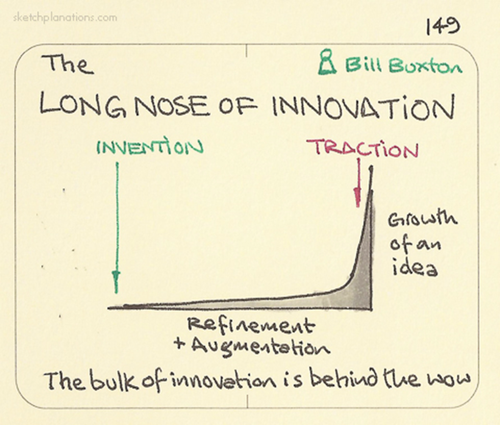
Credit: Sketchplanations
We’ve seen this many times over the years. For example, multi-touch interfaces have been around in some form for decades, but didn’t really take off until the iPhone. And it’s the same story with tablet computers and the iPad.
And we all kind of know this, yet we still seem to go through this hype curve every time:
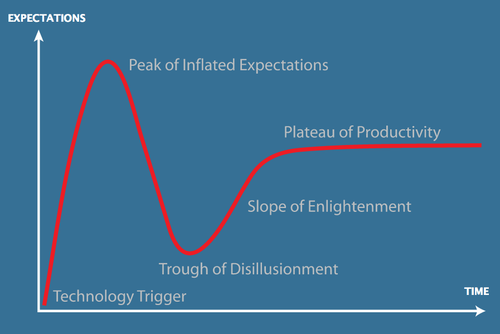
Credit: Wikipedia
I’m guilty of this too. We hear about a cool new technology, and we get really excited about it, and then we try it, and it lets us down. It doesn’t meet our expectations, and our instant reaction is that the whole thing is a load of rubbish. But gradually as the tech becomes more refined, we start to understand more about what they’re good for and what they’re bad for, and eventually they just become another part of everyday life.
So bearing all this in mind, let’s take a look at a couple of upcoming paradigms that I think could be genuinely disruptive in the next few years…
Augmented Reality and Holographics
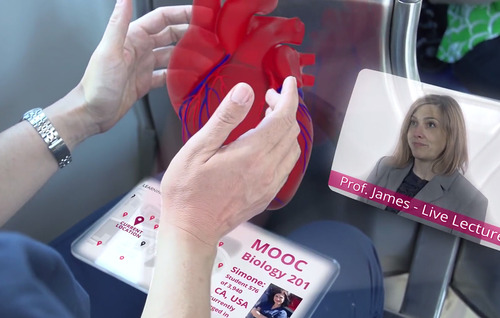
Credit: Pearson School of Thought
Firstly, holographic-style augmented reality interfaces, where you can reach out, create and interact with virtual content in 3D, Tony Stark -style. Basically, future AR displays combined with future Leap Motion-style sensors to let you manipulate things with your hands in natural ways. This could bring the real world and the digital world a lot closer together. Imagine using this to collaborate with people to design and create things - each being able to see what each other is painting in the air…
It might seem like this is still a long way off…But it shouldn’t be long before we can start to try it out at least. Meta are planning to bring “the first holographic interface” to market next year.
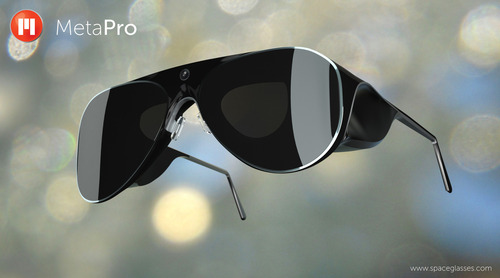
Credit: Meta
This Pro version will be $3,650 and it’ll be attached to a pocket computer. So there’s a couple of reasons already why it’s unlikely to shoot up that traction axis straight away. But some smart people predict that it will only be 5 years before it becomes this:
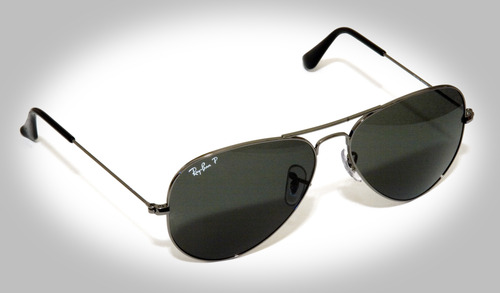
Credit: Wikimedia
Just regular looking glasses or shades. That could really help to open it up to the mass market.
Virtual Reality
And how about Virtual Reality?

Credit: Sudhee
Again, people have been talking about it for decades. But it should only be next year before we have the first affordable Virtual Reality consumer devices go on sale, like the Oculus Rift:
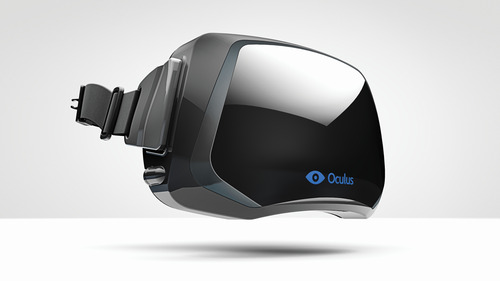
Credit: Oculus Rift
The unique thing about VR is the feeling of “presence”; you’re transported into another environment. Go to the edge of a cliff in virtual reality and you should find that you get sweaty palms and a quickening heart beat, like you would in real life.

Credit: Fotolia
Of course, your conscious brain knows that you’re just wearing what is effectively a pair of clunky ski goggles. But enough of your subconscious brain is tricked that it can feel like you’re actually immersed in another world…
Here’s just one interesting example: hooking into a live camera feed on another person, to enable a person in a wheelchair to see herself dancing on her feet:
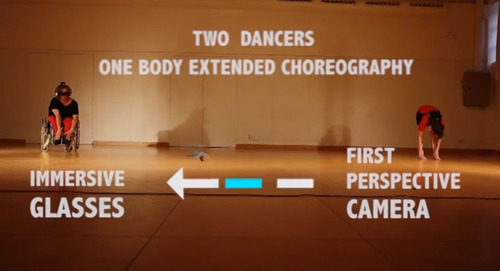
Credit: BeAnotherLab
We’re only really just scratching the surface of it right now, but we have the potential to create some amazing experiences for people, which can lead to reactions like this:
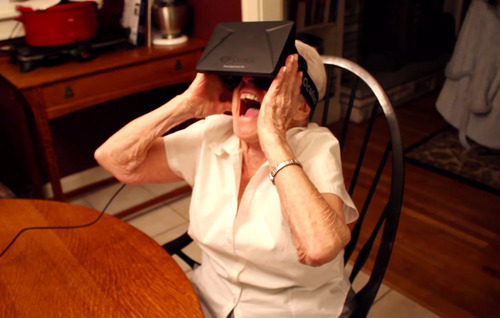
Credit: Paul Rivot
WebVR
This is why I think Virtual Reality is exciting, and it’s an especially exciting time for us Web developers right now. Because just in the last few weeks:
- Apple finally embraced WebGL, a key technology for creating 3D experiences in the browser
- And Mozilla and Google have both released special builds of their browsers, with initial support for Virtual Reality
This is what they’re implementing:
- The ability to discover available Virtual Reality devices (in practice just the Oculus Rift right now, but more will be coming…)
- Full screen extensions so you can request an element goes full screen on the VR headset
- Sensor integration so you can use for example, the orientation of the device
- And the particular distortion effect required for rendering on different VR devices - you should be able to be hardware agnostic
Google are calling this “WebVR” (Mozilla don’t seem to be naming it anything in particular yet). It’s at “version zero” and it’s not even in the alpha channels of the browsers yet; currently you can only get this in separate builds.
Here’s how you use it… With a WebGL scene, you render it twice, side by side: one for your left eye and one for your right eye.
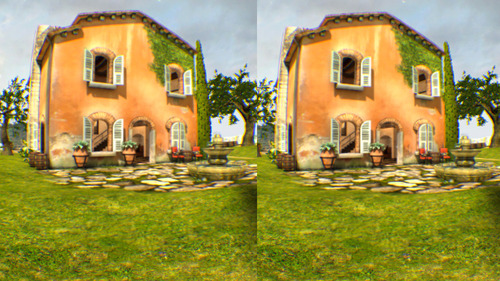
Credit: Oculus Rift
The browser can apply the distortion required for the particular device
- it’s like this for the Oculus Rift:
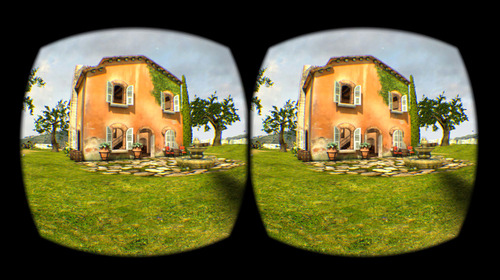
Credit: Oculus Rift
This is what the lenses will turn into something that covers as much of your vision as possible.
As for CSS3D content, it should be even easier because it’s declarative, so you can leave it up to the browser to figure out how to render it. You should just need to use ‘preserve-3d’ and set the ‘perspective’, then just request that your containing element goes full-screen on the VR device. That’s the theory anyway: Mozilla are working on this now, but I haven’t seen any demos of it yet [Update: as of 31st July, Mozilla have released new builds with preliminary CSS integration].
We’ll stick with WebGL and I’ll show you just the key pieces of code we need to add. Warning: these APIs are brand new - they will undoubtedly change.
if( navigator.getVRDevices ) {
navigator.getVRDevices().then( vrDeviceCallback );
}
This is the discovery bit. [Update: Chrome and Firefox now both use promises].
function vrDeviceCallback( vrDevices ) {
for( var i=0; i < vrDevices.length; i++ ) {
// If instance of HMDVRDevice...
// If instance of PositionSensorVRDevice...
}
}
In our callback we can check it’s a Head-Mounted Display and also see if we can get sensor data out for the orientation.
var leftFOV =
vrHMD.getRecommendedEyeFieldOfView('left');
var leftTrans = vrHMD.getEyeTranslation('left');
For each eye, we can ask for the recommended field of view which we can use to set the right camera projection, and also the translation to apply, as in how far apart the cameras should be.
if( canvas.webkitRequestFullscreen ) {
canvas.webkitRequestFullscreen({
vrDisplay: hmdDevice });
} else if( container.mozRequestFullScreen ) {
container.mozRequestFullScreen({
vrDisplay: hmdDevice });
}
And we call requestFullscreen, passing in our VR device. (Note that for Chrome “Fullscreen” has a small ‘s’ and you need to do it on the actual actual WebGL canvas element. For Firefox, it’s a big ‘S’ and their example calls it on the element containing the canvas).
Now you just need to add your usual WebGL goodness. I used the popular Three.js library. I also like dinosaurs, so I added a dinosaur thanks to Dorling Kindersley. Plus a sky map from eyeon Software. And I made this…
I’m hoping to release the code, but I haven’t been able to yet. Brandon Jones from Google has the code for his demo up here though, plus be sure to check out his blog post.
Google Cardboard
Also just in the last few weeks, Google unveiled Cardboard which, as it sounds, is literally made out of cardboard, but it just takes a couple of lenses and a button made out of a magnet, and it can turn your existing smartphone into a rudimentary Virtual Reality device for just a few dollars.
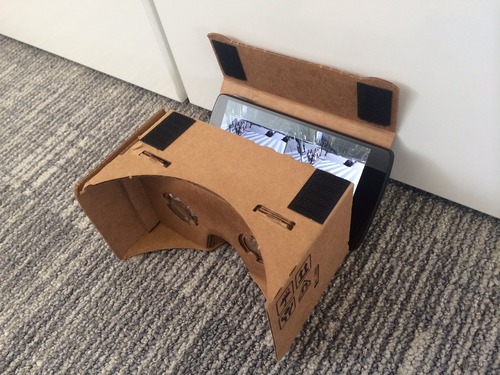
We can also create Cardboard apps using Web technologies, right now. It’s not supported by these very new WebVR implementations just yet, but because it’s essentially just a phone, we don’t actually need WebVR to be able to get it to work.
In fact, Three.js has a StereoEffect we can apply, which makes it easy to render the same scene for both eyes side by side:
var effect = new THREE.StereoEffect( renderer );
...
effect.render( scene, camera );
And Three.js also has a controls module that uses the standard HTML5 orientation API in order to render things according to the orientation of the phone:
var controls = new THREE.DeviceOrientationControls(
camera, true);
controls.connect();
...
controls.update();
Here’s what that looks like:
Again, unfortunately I can’t share the code for this right now, but Google have a code example up here.
Just a taster
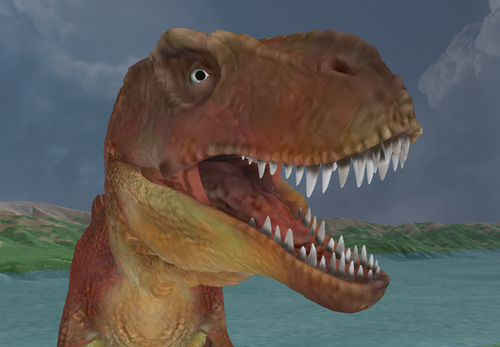
Hopefully I’ve given just a taster about some exciting new technology coming up, and how you can get started with Virtual Reality right now.
I’ll leave you with this thought…
Today, we’re creating pictures under glass.
Tomorrow we’ll create whole new worlds.

Credit: mind-criminal
So let’s get ahead of the curve and start hacking now!
Thank you.
